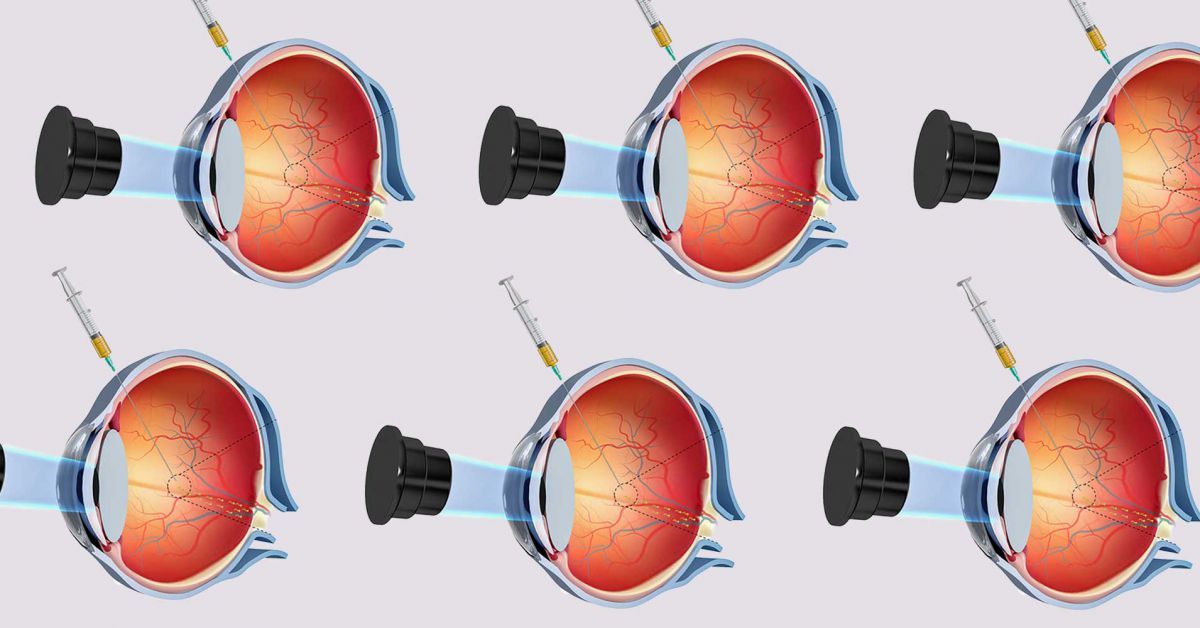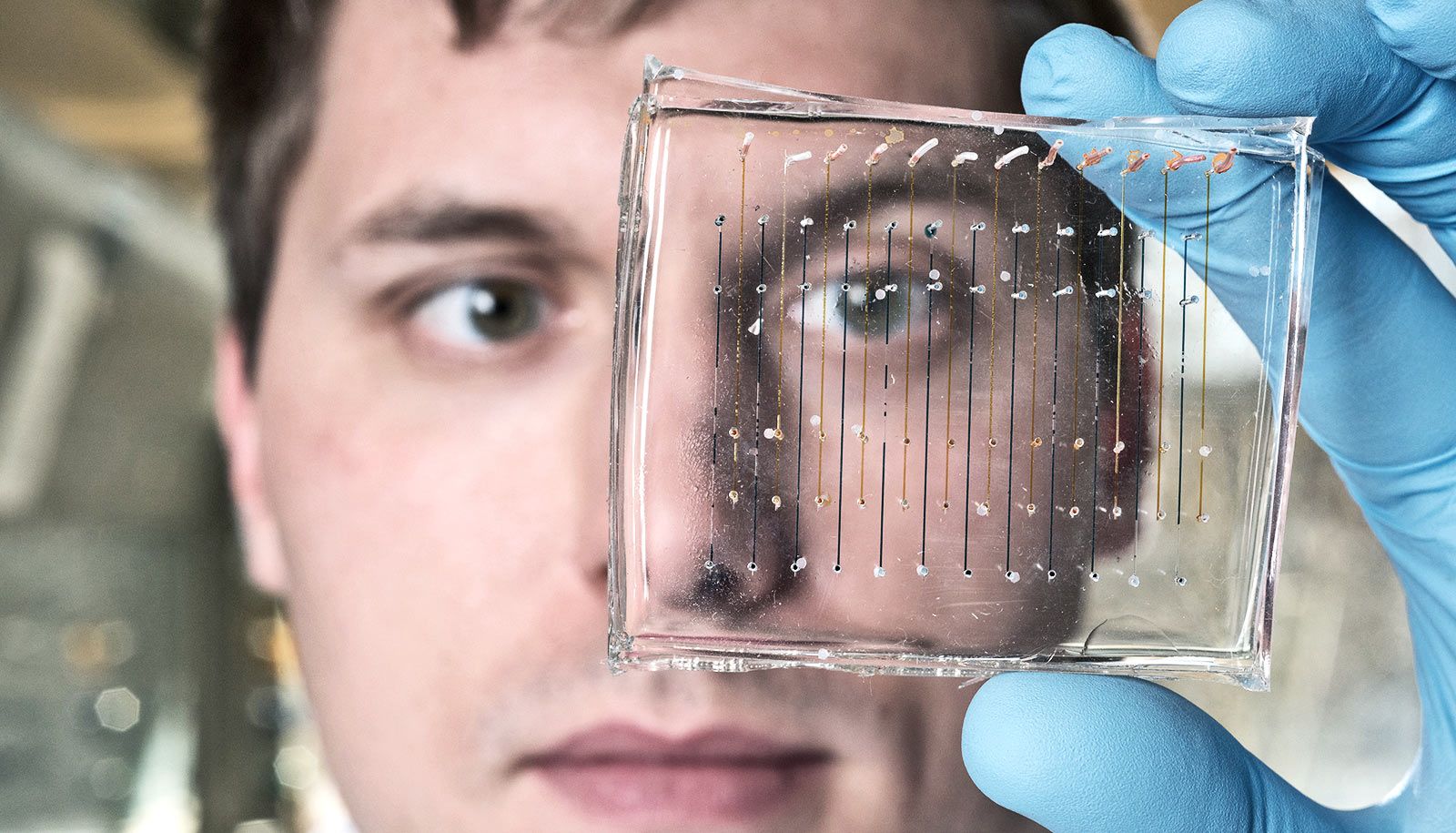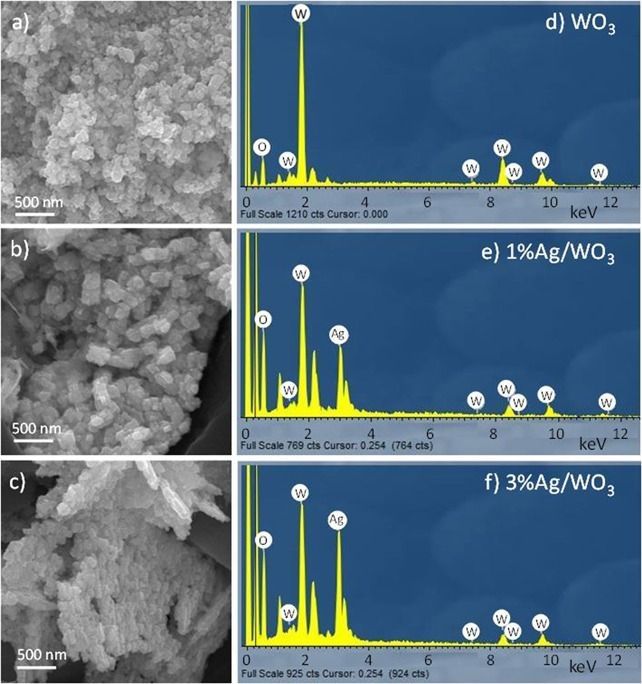It simply twists its way through the dense tissue.


Scientist use magnetic field to drive spiral nanobots.

Rutgers scientists have created a tiny, biodegradable scaffold to transplant stem cells and deliver drugs, which may help treat Alzheimer’s and Parkinson’s diseases, aging brain degeneration, spinal cord injuries and traumatic brain injuries.
Stem cell transplantation, which shows promise as a treatment for central nervous system diseases, has been hampered by low cell survival rates, incomplete differentiation of cells and limited growth of neural connections.
So, Rutgers scientists designed bio-scaffolds that mimic natural tissue and got good results in test tubes and mice, according to a study in Nature Communications. These nano-size scaffolds hold promise for advanced stem cell transplantation and neural tissue engineering. Stem cell therapy leads to stem cells becoming neurons and can restore neural circuits.

In the spirit of Halloween, where ghouls, ghosts, and vampires walk among us, our perception of reality will soon transform as well, forever possessed by the specter of Transhumanism!
Last year, I wrote about how people could transform themselves into one of my favorite horror creatures—a real-life werewolf—using modern science and tech. This merely scratches the surface, however, in terms of how far an individual can go. In a Transhumanist future, you’ll be empowered to not only question the extent of your humanity but equally put those questions into action.
The route one would be able to take would be in abundance. Some will choose a cybernetic route, replacing their organs and limbs for artificial machines, and even potentially adding newer organs and limbs alongside the ones they already have. Others may choose a more biological route by using gene-editing tech and synthetic biology, enhancing themselves at the genetic level and using stem cell therapies to maintain their bodily health for prolong periods of time.
And then there are those who’ll attempt to move far beyond their biological or technological state. Technologies like nanotech, mind uploading, etc. will allow individuals to downscale their physical appearance—or, perhaps, do away with it altogether; to become beams of light cascading across the digital world, living under the embodiment of code. And wherever that code resides, that’ll be your exterior shell. If you were to upload yourself into a smart home, for example, you would become that home, haunted by your digital presence.


“Previous work mostly focused on what was going on at the microscale of DNA,” says study co-author Michael Shelley, group leader for biophysical modeling at the Flatiron Institute’s Center for Computational Biology in New York City and co-director of the Courant Institute’s Applied Mathematics Laboratory at New York University. “People didn’t really think about what was going on at the larger scale.”
Shelley and colleagues simulated the motions of chromatin, the functional form of DNA inside the nucleus. Chromatin looks like beads on a string, with ball-like clusters of genetic material linked by strands of DNA. The researchers propose that molecular machines along the DNA cause segments of the chromatin to straighten and pull taut. This activity aligns neighboring strands to face the same direction. That alignment, in turn, results in a cascading waltz of genetic material shimmying across the nucleus.
The dancing DNA may play a role in gene expression, replication and remodeling, though the exact effects remain unclear, the researchers reported online October 22 in Proceedings of the National Academy of Sciences.
Wonderful to see the continuing progress of Mr. Omar Flores, with the support of his lovely wife, actress Mayra Sierra, today on the Venga la Alegria (VLA) show on TV Azteca (http://www.aztecauno.com/vengalaalegria) — The importance of an integrated approach to curing spinal cord injury including family, physical therapists, and the medical team at Regenerage (https://regenerage.clinic/)

Visions for what we can do with future electronics depend on finding ways to go beyond the capabilities of silicon conductors. The experimental field of molecular electronics is thought to represent a way forward, and recent work at KTH may enable scalable production of the nanoscale electrodes that are needed in order to explore molecules and exploit their behavior as potentially valuable electronic materials.

The cancer is a group of diseases characterized by the uncontrolled growth and spread of abnormal cells, and in most of the cases develop into malignant masses of tissues called tumors, and it is the leading causes of mortality and a major public health challenge worldwide. In normal body, genes in the cell nucleus, containing long strings of DNA (deoxyribonucleic acid) regulate the controlled division and function of cells and any damage to DNA causes the mutation of genes, which in turn triggers the uncontrolled division of abnormal cells, leading to the damage of vital organs. Cancer cells can detach from the original mass of tumor and migrate to new locations through blood and lymphatic system and also cancer cells produce enzymes that are capable of breaking the normal cells. For cancer diagnostics, the conventional histopathological and radiological examinations are still used for evaluating the clinical and pathologic staging, needed for cancer treatments. Depends on the stage of cancer development, different treatment options like chemotherapy, radiation therapy, stem cell transplant, immunotherapy, hormone therapy, targeted drug therapy and surgery are advised. The major disadvantages of the available advanced treatment options include non localized invasion to other body parts, intolerable cytotoxicity, unsystematic distribution of antitumor agents, immune to chemical agents, low bioavailability and limited option to evaluate the tumor cell response to therapies4,5. In spite of the drawbacks of these advanced treatment options, cancer is curable if it is diagnosed at an early stage.
Phototherapy has been used for the treatment of jaundice, cancer, dermatological conditions, and ophthalmological disorders by simply using the light of certain selected wavelength. Photodynamic therapy, on the other hand is a method of photosensitizing the action of drugs to kill cancer cells, but the major drawback of this treatment is that most of the drugs used for photodynamic therapy remain activated for a long time, leading to overdose to damage non cancer cells. In the photo-catalytic process, no drug is used, instead the nontoxic semiconductor photo-catalyst like WO3 generates electron hole pairs, when it is exposed to the light of appropriate wavelength and these photo-generated charge carriers mediate oxidation and reduction reactions in the cancer cell to eliminate them.